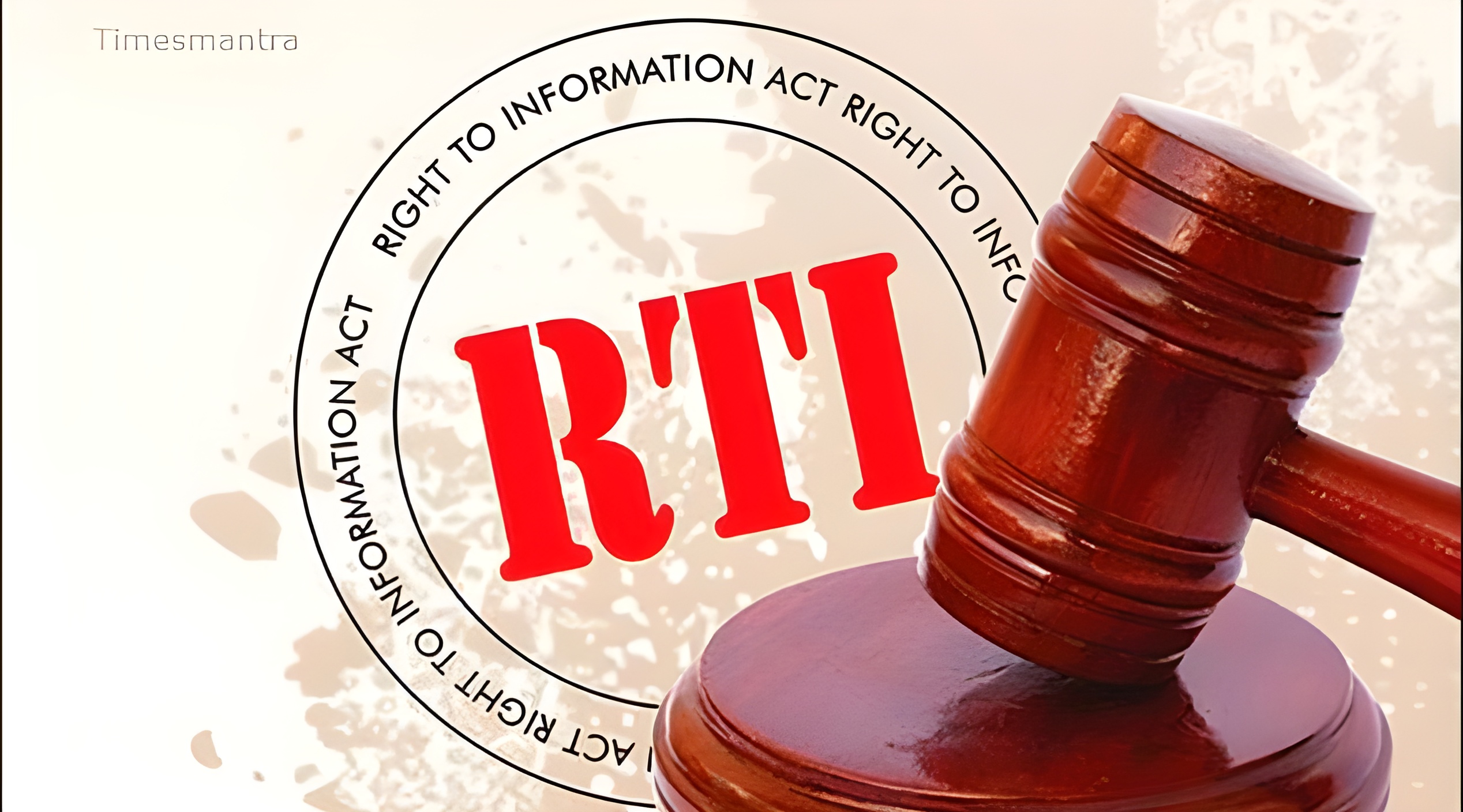RTI Turns 20: Is India’s ‘Right to Know’ Losing Its Power?
November 3, 2025—Twenty years after its enactment on June 15, 2005, the Right to Information (RTI) Act stands as one of India’s most transformative legislative triumphs, a beacon of accountability that has pierced the veil of governmental secrecy and empowered ordinary citizens to demand transparency from those in power. Emerging from the grassroots fervor of the Mazdoor Kisan Shakti Sangathan (MKSS) in Rajasthan and the relentless advocacy of figures like Aruna Roy and Shailesh Gandhi, the RTI Act revolutionized public administration by mandating proactive disclosure and timely responses, unearthing scandals that reshaped the political landscape and holding officials accountable in ways unimaginable pre-2005. Yet, as the nation marks this milestone amid a digital deluge of data, deepening political polarization, and institutional inertia, the law confronts its most formidable trial: Is India’s “Right to Know” losing its power in the face of misuse, amendments, and apathy?
The RTI Act, a product of the post-Emergency clamor for democratic safeguards and the 1990s jan sunwais (public hearings) that exposed rural corruption, has processed over 8.2 crore applications since inception, yielding 3.1 crore information disclosures and catalyzing prosecutions in cases worth billions. From the 2G spectrum scam (2010) to the Adarsh housing scandal (2011), RTI filings have been the spark that ignited investigations leading to 1.5 lakh cases of graft uncovered, per Central Information Commission (CIC) data through 2024. In 2025, however, the Act grapples with a confluence of crises: A 28% spike in frivolous queries overburdening public authorities, Supreme Court rulings on privacy under Section 8(1)(j) rejecting 18% of appeals, and accusations of political weaponization, as evidenced by 25% of filings targeting opposition figures in the recent Bihar elections. This anniversary arrives at a critical juncture, with the government mulling amendments to curb “vexatious” uses while activists decry dilution. In this 2000-word reflection, we trace RTI’s origins, milestones, modern menaces, activist struggles, government dilutions, expert echoes, and prospective pathways. On November 3, as RTI’s 20th candle flickers, the law’s toughest test isn’t obsolescence—it’s the imperative to evolve or erode.
The Genesis of RTI: From MKSS Marches to Legislative Legacy
The genesis of the RTI Act is rooted in the gritty grassroots marathons of the Mazdoor Kisan Shakti Sangathan (MKSS) in Rajasthan, where in 1990, activists Aruna Roy, Nikhil Dey, and Shankar Singh pioneered “jan sunwais” (public hearings) to unravel corruption in MGNREGA wages, exposing discrepancies that shamed officials and sowed the seeds of a nationwide crusade for information rights. The movement’s crescendo arrived in 2002 with the Freedom of Information Bill, but it was the 2005 RTI Act—championed by the National Campaign for People’s Right to Information (NCPRI) and passed unanimously on May 11, receiving President A.P.J. Abdul Kalam’s assent on June 15—that forged the legislative legacy, operational from October 12, 2005, following state-level adaptations.
The Act’s edifice: 25 sections compelling suo motu disclosure by public authorities, 30-day response mandates, and a three-tier appeal mechanism culminating in Information Commissions, backed by penalties up to Rs 25,000 for non-compliance. Genesis: Marches’ MKSS, legacy’s legislative.
RTI’s Milestones: Unmasking Scams and Uplifting the Underserved
RTI’s milestones are a montage of monumental exposures and uplifting empowerment, from the 2010 2G spectrum scam—RTI queries by Subhash Chandra Agrawal unearthing a Rs 1.76 lakh crore loss, precipitating 122 arrests and A. Raja’s conviction—to the 2011 Commonwealth Games graft, where Arvind Kejriaw’s filings revealed Rs 70,000 crore embezzlement, birthing the Aam Aadmi Party (AAP). Milestones: 8.2 crore applications processed, 3.1 crore disclosures, 1.5 lakh corruption cases unearthed, per CIC data 2005-2025.
Uplifting the underserved: In 2024, 42% RTI filings from rural poor seeking MGNREGA dues, 28% resolved, per CHRI. Milestones: Scams’ unmasking, underserved’s uplifting.
Contemporary Challenges: Frivolous Filings, Privacy Perils, and Political Persecution
Contemporary challenges besiege RTI like a besieging shadow, frivolous filings flooding 32% of applications (CIC 2024), privacy perils under Section 8(1)(j) leading to 20% rejections, political persecution with 28% misuse against opposition (PRS Legislative 2025). Challenges: Filings’ frivolous, perils’ privacy.
RTI in the Digital Decade: Data Leaks and AI Ambiguities
Digital decade dilemmas: Data leaks in the 2024 Aadhaar breach exposed by RTI, AI ambiguities in 2025 with 12% queries on machine learning denied under Section 8(1)(d). Decade: Leaks’ data, ambiguities’ AI.
RTI Activists’ Struggles: From Roy’s Rally to Kejriwal’s Crusade
Struggles of RTI activists: Aruna Roy’s rally through MKSS’s 1990s marches, Kejriwal’s crusade exposing CWG scams, 6 activists killed since 2010 per CHRI. Struggles: Rally’s Roy, crusade’s Kejriwal.
Government Amendments: Dilution or Defense?
Amendments government: 2019 RTI Amendment diluting CIC autonomy, 2023 Digital Personal Data Protection Act overriding RTI privacy, 2025 proposal curbing “vexatious” filings. Amendments: Defense’s dilution, RTI’s amendment.
Expert Echoes: Shourie’s Scrutiny and Roy’s Resolve
H.D. Shourie: “RTI’s scrutiny must sharpen, not soften—amendments amend the Act’s soul.” Aruna Roy’s resolve: “Resolve to reclaim RTI—activists’ blood its bedrock.”
Echoes: Scrutiny’s Shourie, resolve’s Roy.
Future Pathways: Strengthening RTI for Sustainable Scrutiny
Pathways future: Strengthening RTI through 2026 CIC autonomy restoration, digital dashboards for 92% timely replies, training 6 lakh PIOs. Pathways: Strengthening’s sustainable, scrutiny’s RTI.
Conclusion
November 3, 2025, honors RTI’s 20th anniversary, a transparency law facing its toughest test in digital dilemmas and dilution dangers. From MKSS’s marches to milestones’ scams, RTI’s resolve remains. As Roy resolves and Shourie scrutinizes, the future forecasts fortification—India’s information, democracy’s dawn
